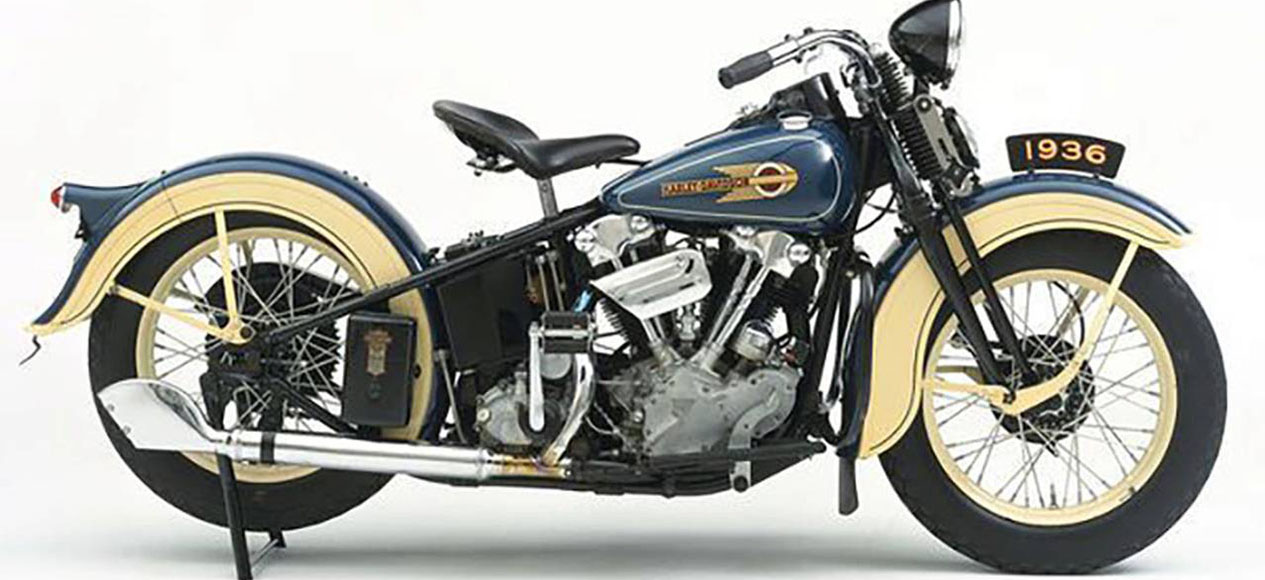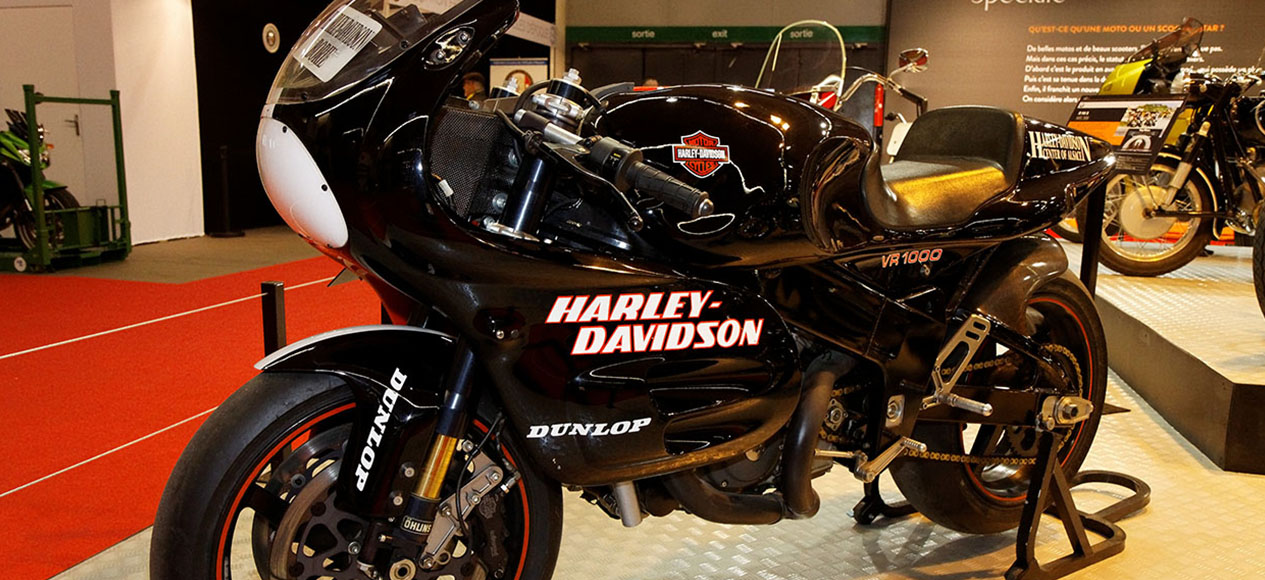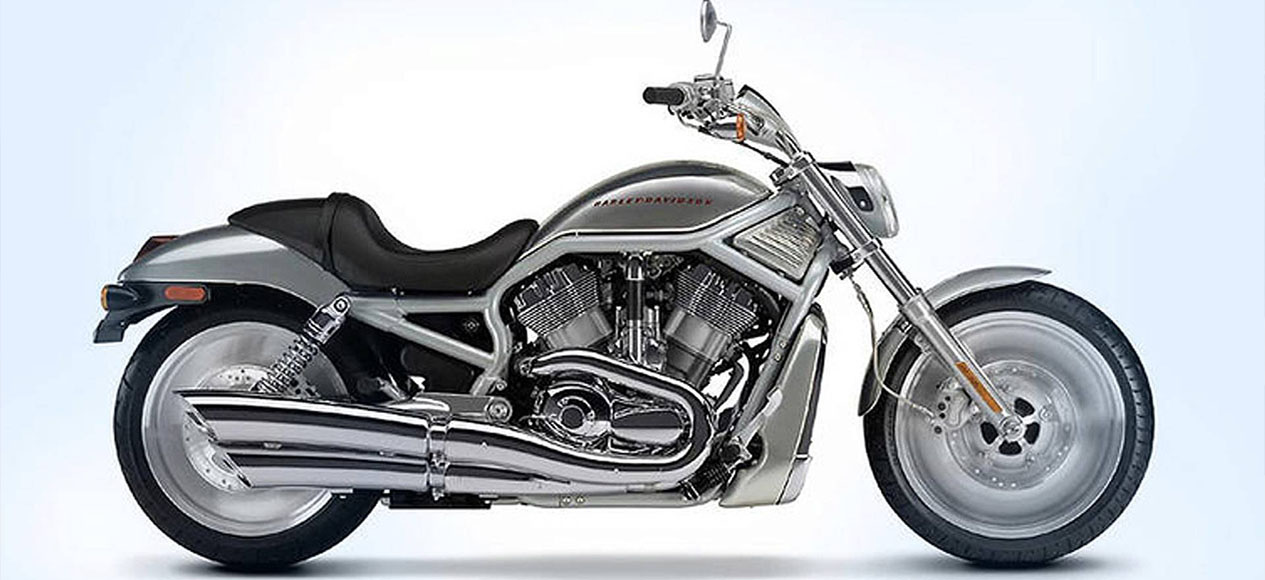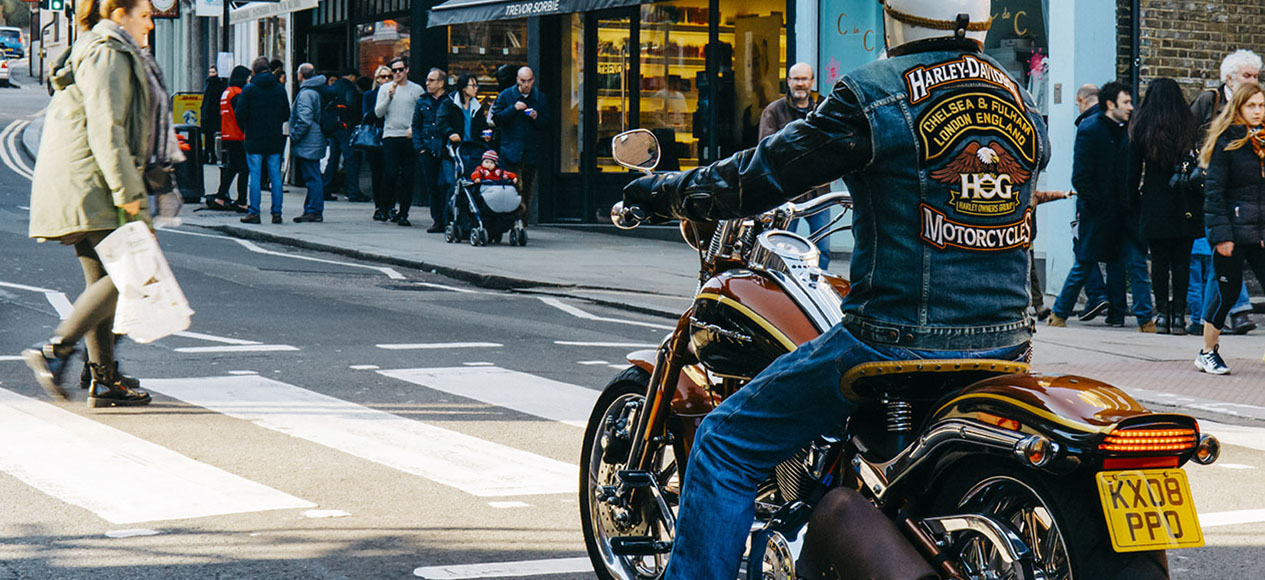American company Harley-Davidson is probably the most famous motorcycle manufacturer in the world.
Known to many as The Motor Company, Harley has the most loyal and partisan following of any motorbike company. These days it’s known predominantly for its range of custom/cruiser models but that’s not always been the case and, as the company looks to the future, it is set to diversify with new and more eclectic models in the years to come.
Harley-Davidson came into being in the early 1900s, when young William Harley designed a small internal combustion engine, which could be fitted to proprietary bicycle frames. Together with his friend Arthur Davidson, and Arthur’s brother Walter, they produced the 116cc engine in 1901. By 1905 Harley-Davidson were making complete motorcycles, albeit in small quantities, and in 1907 they showcased their first engine with a V-twin layout – the format with which they would become synonymous. These 880cc bikes made around 7bhp and were good for around 60mph, making them high performance machines of their time.
Harley-Davidson went on to produce almost 20,000 motorcycles for the American military during the Great War and when the world returned to peace, the company had established a network of 2,000 dealers in 67 countries.
Tough times were around the corner though. The Wall Street crash of 1929 decimated the American motorcycle industry. Only Harley-Davidson and Indian survived the depression, but it was hard. Production of bikes in America fell from 32,000 to 6,000 units per year in this period and it was the simple single-cylinder D and V models which kept the company going.
By 1936 the depression was coming to an end and H-D finally launched a new model. The Knucklehead, named because of the shape of the rocker boxes, was to become a Harley-Davidson classic. Sales went from a low of 3,700 during the depression to more than 18,000 before the outbreak of World War Two.

Wartime needs again saw the factory turned over to military production, with around 90,000 machines made for the war effort.
Civilian production reached an all-time high in 1948, as the Panhead replaced the Knucklehead. The Panhead powered the new HydraGlide model of 1949, so called because if featured hydraulically-damped telescopic forks. The ‘50s saw the development of the classic styles for which Harley-Davidson are synonymous, such as the ElectraGlide and Sportster. The company also became famous for racing on the American circuits, and even produced a utilitarian 125cc two-stroke which, like the BSA Bantam, was based on the German DKW design acquired as part of the war reparation programme.
Diversification was a part of the Harley business plan in this era, often with little success. By the start of the 1960s, H-D had acquired a 50% stake in Italy’s Aermacchi. As well as rebranding the Varese company’s small capacity road bikes, the Italians developed a series of sporty two-strokes and ran a Grand Prix racing programme in the 250cc and 350cc classes. Italy’s Walter Villa won the 250cc world title each year from 1974 to 1976 on a ‘Harley-Davidson’, as well as the 1976 350cc championship.
By this time the company was owned by AMF. American Machine Foundry were best known for making bowling equipment and took over the company at a troubled time. Harley-Davidson had floated on the New York stock exchange in 1965, but the arrival of high performance Japanese machines had seen demand for Harleys decline. AMF took a majority shareholding in early 1969 and would continue to be at the helm for the whole of the 1970s. The AMF era is not considered a great one for Harley-Davidson, with the bikes derided for their poor build quality and unadventurous engineering, continuing with the traditional 45-degree air-cooled twin against the onslaught of four-cylinder Japanese bikes.
While the 1970s all but killed off the British bike industry, Harley-Davidson clung on. In 1981 a management buy-out took over control from AMF, with Willie G. Davidson – a member of the founding family, as part of the group. The 1980s remained a difficult period, despite the new Evo engine, which was a development of the previous generation Shovelhead. The company was still making traditional products though, leaving the Japanese manufacturers to pursue the four-cylinder sports bike route.
But the tide began to turn and an upturn in fortunes in the 1990s saw the company we know today emerge. Japanese companies found themselves in decline, especially in America, and Harley was able to exceed 62,000 bikes a year, with 70% staying in the US. Six out of 10 big bikes sold in America wore the Harley-Davidson badge and although the V-twin engine remained traditional, it was also heavily updated. A new model for 1990, the Fat Boy, was to become an icon and fuel injection was added to keep the engines clean. By 1999 the Twin Cam 88 engine was introduced and a Harley culture meant that the big HOGs were not merely motorcycles. Harley enjoyed brand loyalty unparalleled by any other motorcycle manufacturer and the company’s innovative marketing created a lifestyle and image that could not be replicated by competitors. Many owners considered themselves not as bikers or motorcyclists, but as Harley riders first and foremost – the culture enhanced by the enormously successful Harley Owners Group (HOG) and its worldwide chapters.
Not that the ‘90s were a complete success. In 1993, Harley purchased 49% of Buell, the American sports bike manufacturer which was set up by Erik Buell, a former engineer with Harley. Buell’s range of quirky sports models were powered by Harley-Davidson engines, and by 1998 it was subsidiary of the Motor Company, which now held a majority stake. Despite the investment, Buell never seemed a good fit with the rest of the company and the products were too niche for most motorcyclists. Buell finally closed its doors in 2009.

Buell wasn’t Harley-Davidson’s only attempt to crack the 1990s sport bike market either. In 1994 it introduced the VR1000 race bike. Built around an all-new, 1000cc eight valve V-twin, with a 60-degree angle, the VR1000 raced in American national superbike championships but proved too slow against the Ducatis and Japanese competition. A few road bikes were made for homologation purposes, although the engine went on to form the basis of a new powerplant used in the V-Rod power cruiser. Developed by Porsche and enlarged to 1131cc, the V-Rod marked a radical departure for the brand when it was introduced in 2001. Good bike as it was, the thought of water running through the engine’s veins was too much for the Harley traditionalists. It remained in the range until 2017 but was outlasted by the more conventional air-cooled motors.

The 2000s have generally been good times for Harley-Davidson, with the iconic brand heading into new Asian markets as well as continuing to succeed in its home country. Today it is a premium brand with high specifications and a good level of build quality. The range has been expanded, with plenty of retro models themed around the company’s rich heritage, fully loaded tourers, baggers and stripped down Sportsters. The company’s success has been expanded by a strong clothing line and an accessory range that allows owners to modify and customise their cruisers to their heart’s content, while smaller capacity water-cooled V-twins provide a relatively low cost entry level bike for new riders.
Despite the seemingly traditional model line-up, the 2020s look to be an exciting era for Harley-Davidson. Launched in 2019, the Harley-Davidson Livewire is a fully electric motorcycle and as radical a departure as you can get for the bar and shield brand. The Livewire is the first of many battery powered bikes promised in the coming years, while a prototype (petrol powered) sports bike and BMW GS-style adventure machine, called the Pan America, are proof that the legendary American company won’t be resting on its laurels, as it looks to expand and move into new sectors as part of its ambitious growth programme.



